Two mega safety trends were discussed at “Safety2.0 International Safety Symposium 2018,” attracting nearly 200 attendees
The Institute of Global Safety Promotion (IGSAP) and the NIKKEI BP Intelligence Group held the Safety2.0 International Safety Symposium 2018 on November 20, 2018, in Tokyo. The annual symposium, which marked its third year, attracted as many as 200 attendees that filled the venue Hall B2 in the Kikai Shinko Kaikan Building (Minato Ward, Tokyo). Six speeches were given followed by a panel discussion, with the theme, “A Global Standard―Power Up your Business with SAFETY.”
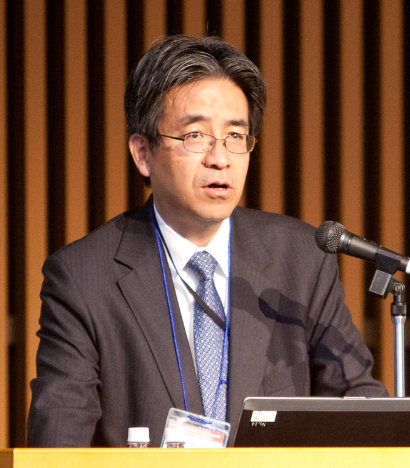
The first speaker taking the podium was Mr. Yoji Ueda, Deputy Director-General of the Manufacturing Industries Bureau, in the Ministry of Economy, Trade, and Industry (METI). In a speech entitled “The Future of Safety at Manufacturing Sites,” Mr. Ueda noted that in the current era, when the advent of new technologies such as AI (artificial intelligence) and IoT (the Internet of Things) are drastically changing the way of monodzukuri (manufacturing), a new approach is necessary to ensure safety by leveraging these advanced technologies and by fully understanding the history of monodzukuri. The forerunner of such an approach is collaborative safety, or “Safety2.0.”
The next speaker was the creator of Safety2.0, Dr. Masao Mukaidono, Chairman of the Institute of Global Safety Promotion and Professor Emeritus of Meiji University.
In October 2018, Dr. Mukaidono presented a speech entitled, “Japan’s Approach for the Realization of the Future Safety Concept by Implementing Collaborative Safety Technologies” at the International Conference on the Safety of Industrial Automated Systems held in France, and introduced Japan’s leading-edge safety approach to the world. In his speech at the symposium, Dr. Mukaidono explained the trend of safety in the world that was revealed by papers presented at SIAS2018. He noted that since 1999, when the conference was founded, the trend of research subjects has shifted gradually, from machinery safety to functional safety, and now to collaborative safety. Japan is playing a leading role in collaborative safety, the latest safety trend, and Dr. Mukaidono said that “the world is looking in the same direction. We must join forces to design safety together.”
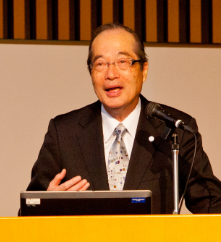
The other mega safety trend in the world is Vision Zero, a global campaign led by ISSA (the International Social Security Association). ISSA’s members are social security organizations and institutions from around the world. The Vision Zero global campaign, which was launched globally at the XXI World Congress on Safety and Health at Work 2017 in Singapore, is targeted at achieving the safety, health, and well-being of workplaces, based on the belief that all accidents, diseases, and harm at work can be prevented.
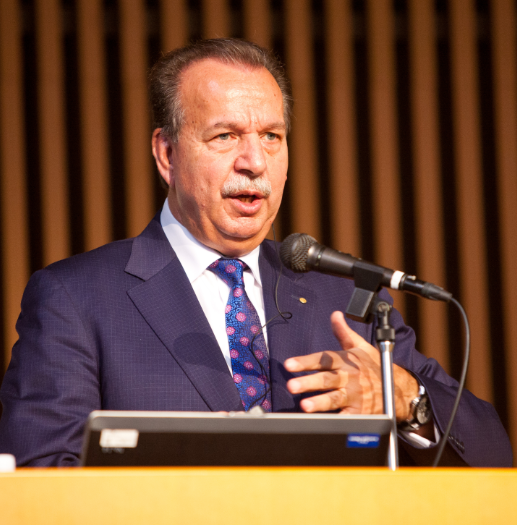
Since the international launch of the campaign, ISSA has rolled out national and regional launches of Vision Zero around the world. In a little over a year, as many as about 1,860 companies, 507 partners, and 519 trainers have joined the campaign. ISSA’s Secretary General, Mr. Hans-Horst Konkolewsky, made a visit to Tokyo to join the symposium and to launch Vision Zero in Japan. In his speech to Japanese business professionals, the secretary general explained that the goals of Vision Zero are closely linked with the United Nations’ Sustainable Development Goals, and described the details of the Vision Zero campaign. He also said that ISSA hopes to strengthen cooperative relations with Japanese partners to promote the campaign in Japan.

The fourth speaker, Mr. Thomas Pilz, CEO of Pilz GmbH & Co. KG, presented Industry 4.0, which has been promoted by the German government.
In Industry 4.0, diverse data from physical spaces are collected through sensor networks, which are then analyzed and collected into a knowledge base by utilizing an extensive data processing technique to leverage cyber-physical production systems. To describe the process’s goal, Mr. Pilz used automobiles as an example, and said that in Industry 4.0, cars that meet customers’ diverse tastes, not cookie-cutter cars, are manufactured. He also noted that because there are more and more applications where humans and robots work in a shared environment, both safety and security are seen as preconditions for Industry 4.0.

Taking the podium next were speakers from Japanese companies that are actively engaged in safety, representing the manufacturing and construction industries.
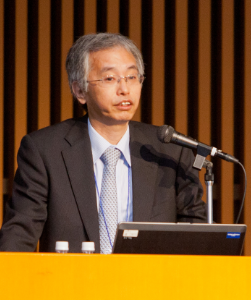
From the manufacturing industry, Mr. Haruyasu Hoshino, Project Manager of the Safety and Hygiene Dept. in the Safety and Health Promotion Division of Toyota, spoke about safety measures taken at his workplace. At Toyota, the reduction in the number of occupational injuries (injuries that require medical treatment) leveled out during the 1990s and toward the middle of the first decade of the 2000s, with no competitive edge over competitors or affiliate companies. Reflecting back on this, Toyota took a number of measures unique to Toyota and established a new safety culture, including “visualizing Safety First,” “felt leadership,” and “raising awareness among executives and managers.” These measures started to show positive effects in the latter half of the first decade of the 2000s, eventually succeeding in reducing the total number of injuries considerably. A new challenge facing Toyota now is how to utilize collaborative robots safely at production sites. Showing video clips of Toyota production sites in operation, Mr. Hoshino discussed where the future of collaborative machines is heading.
From the construction industry, Mr. Takashi Kawata, Managing Executive Officer of Civil Engineering Technology at Shimizu Corporation, began his speech by talking about the i-Construction program led by the Ministry of Land, Infrastructure, Transport, and Tourism.
The program aims at improving construction productivity by 20% by fiscal year 2025, through leveraging advanced technologies such as ICT (information communication technology) in all construction processes, from research, land surveying, engineering, construction, maintenance, and updating. Shimizu Corporation is now developing next-generation tunnel system called the “Shimizu Smart Tunnel.” Mr. Kawata, who is in charge of the project, revealed the details of the system for the first time at this symposium. In the new system, the sensing technology is leveraged to acquire and quantify the knowledge of skilled workers to enable collaboration of AI-based operation control of construction machines; that is, the Safety2.0 system is introduced to achieve both productivity and safety at a high level. Mr. Kawata concluded his speech by declaring that “Shimizu is committed to make the utmost effort so that the tunnel will be regarded as the safest and the most productive of all construction types.”
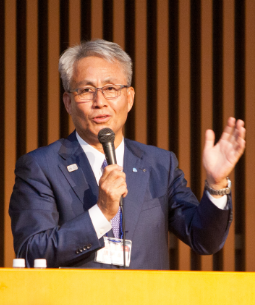
Following the speeches, the six speakers and Mr. Kenji Abe, Executive Director for Coordination of Japan Industrial Safety and Health Association (JISHA), took part in a panel discussion moderated by Dr. Toshihiro Fujita, Director of the Institute of Global Safety Promotion.
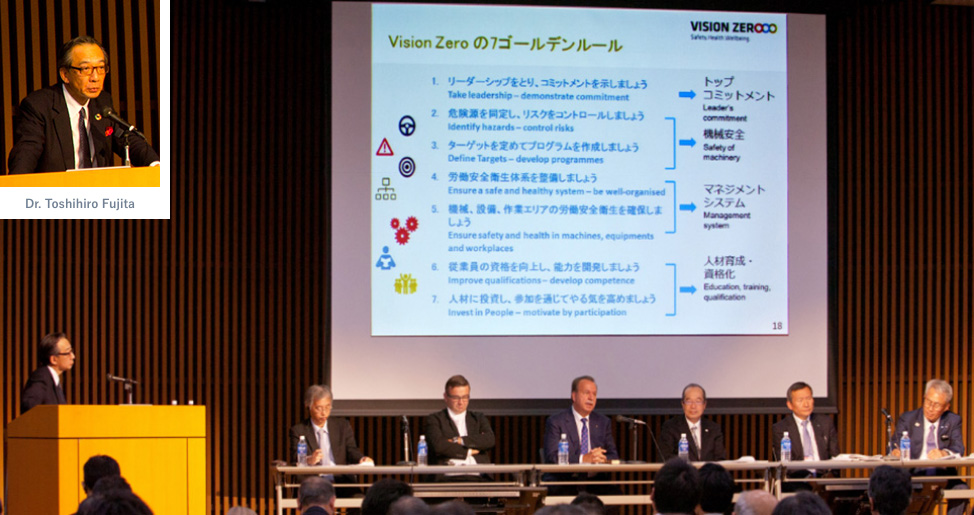
The panel topics were “Vision Zero and Top Executives’ Commitment,” “Collaborative Safety: ‘Safety2.0’ as a Technological Advancement,” “Training of Human Resources and Safety Personnel Qualifications,” and “International Standardization and International Cooperation.” In the questionnaires filled out prior to the panel discussion, many of the audience asked about Vision Zero, a featured topic in the symposium. Most questions were about how to change top executives’ old-fashioned mindset toward safety, such as the belief that “paying attention” is enough. To answer the question, Mr. Konkolewsky stressed that good communication is the key, and made several practical suggestions for the promotion of Vision Zero to help it take root in Japanese society. He said, “Top executives are busy people. Try to explain your safety challenges in a simple and concise manner—for example, in just two lines.”
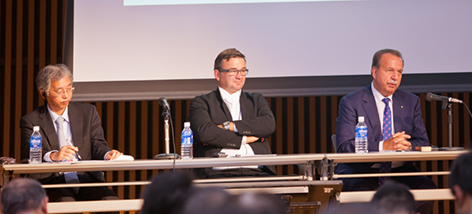
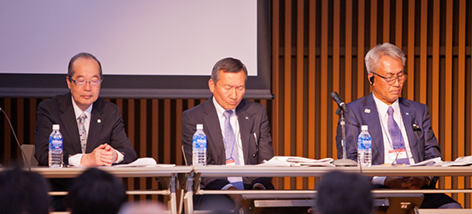
Mr. Abe presented the history of Zero Accident Activities, and noted the importance of “integration of OSH [Occupational Safety and Health] and management strategy” and “activities to cope with the globalization of the economy” as measures that are required in the new era. Mr. Abe also said that the Zero Accident Activities concept has taken a major step, and likened it to the Safety2.0 concept. It uses the following naming protocols, with AA standing for “accident activities”:
・ZERO AA0.0: conventional, worker-dependent activities
・ZERO AA1.0: collaboration of risk assessment based on on-site activities and making machines and systems safe
・ZERO AA2.01: leveraging information technology and cutting-edge technologies such as IoT and AI in the area beyond human capability.
At the end of the symposium, which lasted over seven hours, Mr. Nobuyuki Yamaki, President of JISHA, said, speaking for the audience, “We had wonderful, intensive discussions. The times are changing drastically as shown in the advancement of science technology, workstyle reform, and diversification of values. Thanks to all speakers, we learned a great deal today about how safety is influenced by cutting-edge technologies such as IoT, ICT, AI, and big data, and how we can take advantage of them. This symposium was such a well-timed, productive event.”
Finally, Mr. Yamaki expressed his commitment to safety by stating, “JISHA has long promoted Zero Accident Activities, including Point and Call and KYT* [hazard prediction training]. In the years to come, top executives must take the initiative and be good examples, making investments in safety, and leading a continuous management system. To do so, we will need a person responsible for safety at a company, under the title of CSO (Chief Safety Officer). JISHA will actively engage in collaborative safety and the Future Safety Concept to eradicate occupational injuries.”
*K: kiken (hazard), Y: yochi (prediction), T: (training)
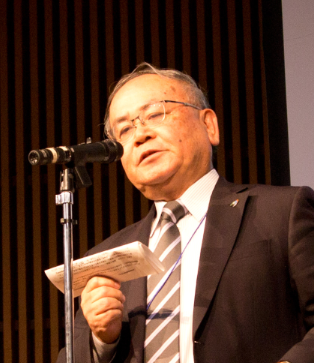
Details of six speeches and panel discussion will be reported on this website.